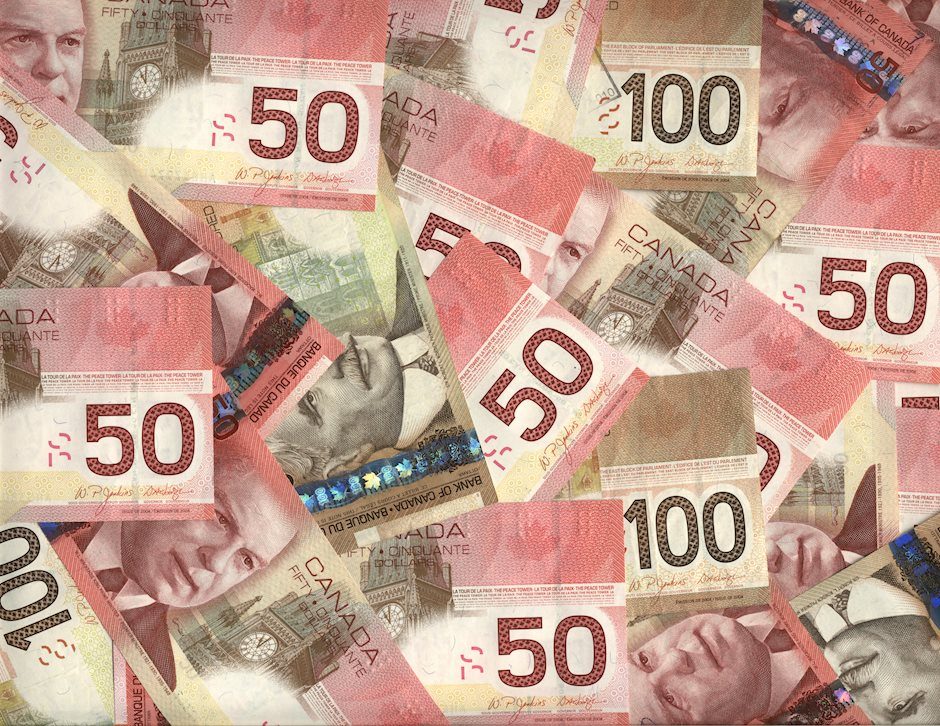USD/CAD turns subdued after mid-tier US data release
- USD/CAD edges lower as the US Dollar tumbles after a slew of mid-tier US economic data.
- Investors will pay close attention to the US PCE inflation data for October.
- The Canadian Dollar remains weak as US Trump threatens to impose 25% tariffs on Canada.

The USD/CAD pair ticks down as the US Dollar (USD) extends its downside but remains broadly sideways around 1.4050 after the release of a slew of mid-tier United States (US) economic data.
The first estimate of Q3 Gross Domestic Product (GDP) growth remained at 2.8%, in line with expectations of the preliminary estimate. Initial Jobless Claims for the week ending November 22 surprisingly came in lower than the former release. The number of individuals claiming jobless benefits for the first time was 213K, lower than the prior reading of 215K, upwardly revised from 213K.
Meanwhile, growth in Durable Goods Orders in October remained weaker than projected. Fresh orders for durable goods rose by 0.2%, slower than estimates of 0.5%. In September, the Durable Goods Orders contracted by 0.4%, upwardly revised from 0.4% decline.
The initial reaction on the US Dollar was bearish, with the US Dollar Index (DXY) refreshing a weekly low around 106.20.
Going forward, the major trigger for the US Dollar will be the US Personal Consumption Expenditure Price Index (PCE) data for October, which will be published at 15:00 GMT. The inflation data will significantly influence market expectations for the Federal Reserve’s (Fed) likely interest rate action in the December meeting.
Though the US Dollar is underperforming, its performance against the Canadian Dollar (CAD) has remained firm, bolstered by US President-elect Donald Trump’s threat of imposing 25% tariffs on Canada and Mexico. Trump said in a post on Truth.Social that China has poured illicit drugs into the US, mainly through Mexico. Trump added that he will impose an additional 10% on China, which will be over 60% that he mentioned in his election campaign.
The announcement of higher tariffs on Canada has weakened the CAD across the board. Canada is one of the leading trading partners of the US, and higher-level tariffs on the nation will dampen its export sector.
Canadian Dollar FAQs
The key factors driving the Canadian Dollar (CAD) are the level of interest rates set by the Bank of Canada (BoC), the price of Oil, Canada’s largest export, the health of its economy, inflation and the Trade Balance, which is the difference between the value of Canada’s exports versus its imports. Other factors include market sentiment – whether investors are taking on more risky assets (risk-on) or seeking safe-havens (risk-off) – with risk-on being CAD-positive. As its largest trading partner, the health of the US economy is also a key factor influencing the Canadian Dollar.
The Bank of Canada (BoC) has a significant influence on the Canadian Dollar by setting the level of interest rates that banks can lend to one another. This influences the level of interest rates for everyone. The main goal of the BoC is to maintain inflation at 1-3% by adjusting interest rates up or down. Relatively higher interest rates tend to be positive for the CAD. The Bank of Canada can also use quantitative easing and tightening to influence credit conditions, with the former CAD-negative and the latter CAD-positive.
The price of Oil is a key factor impacting the value of the Canadian Dollar. Petroleum is Canada’s biggest export, so Oil price tends to have an immediate impact on the CAD value. Generally, if Oil price rises CAD also goes up, as aggregate demand for the currency increases. The opposite is the case if the price of Oil falls. Higher Oil prices also tend to result in a greater likelihood of a positive Trade Balance, which is also supportive of the CAD.
While inflation had always traditionally been thought of as a negative factor for a currency since it lowers the value of money, the opposite has actually been the case in modern times with the relaxation of cross-border capital controls. Higher inflation tends to lead central banks to put up interest rates which attracts more capital inflows from global investors seeking a lucrative place to keep their money. This increases demand for the local currency, which in Canada’s case is the Canadian Dollar.
Macroeconomic data releases gauge the health of the economy and can have an impact on the Canadian Dollar. Indicators such as GDP, Manufacturing and Services PMIs, employment, and consumer sentiment surveys can all influence the direction of the CAD. A strong economy is good for the Canadian Dollar. Not only does it attract more foreign investment but it may encourage the Bank of Canada to put up interest rates, leading to a stronger currency. If economic data is weak, however, the CAD is likely to fall.
Author

Sagar Dua
FXStreet
Sagar Dua is associated with the financial markets from his college days. Along with pursuing post-graduation in Commerce in 2014, he started his markets training with chart analysis.

















